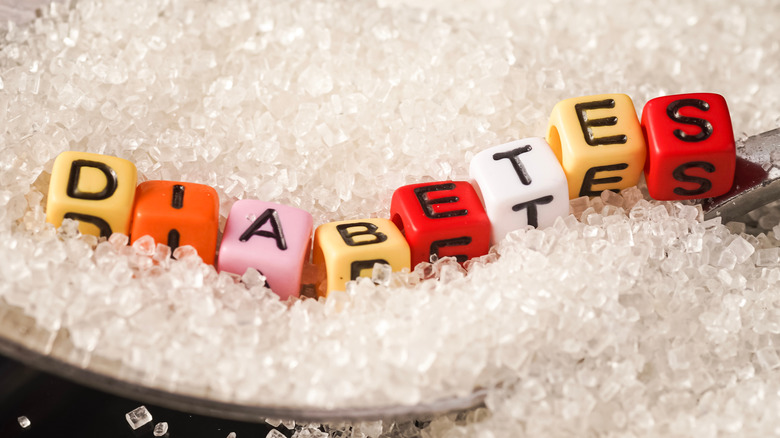Tips For Diabetes Prevention
Diabetes is one of the most common diseases in the United States. It's estimated that 96 million Americans have prediabetes, and 37.3 million Americans have diabetes, according to the Centers for Disease Control and Prevention (CDC). It's also the seventh leading cause of death in the U.S. and amounts to an average of $327 billion in medical costs, lost work, and lost wages every year (via the CDC).
There are two types of diabetes with a clear difference between them. Type 1 diabetes is thought to be caused by an autoimmune reaction and usually develops early in life, according to Healthline. Type 2 diabetes — which is by far the most common, affecting 95% of people with diabetes — can be caused by a family history of the disease or poor lifestyle and dietary choices, according to GoodRx.
While type 1 diabetes cannot be prevented, type 2 can be prevented — or at the very least, slowed down — with some lifestyle changes.
Losing weight reduces the risk of diabetes
Losing weight can be a challenge for many people, but thankfully, you don't have to drop many pounds to reduce your risk of diabetes. It's estimated that people who lose 7% of their body weight can reduce their risk of diabetes by 60%, according to the Mayo Clinic. A 2021 report published in Diabetes Care also recommended that those with prediabetes lose 7% of their body weight to stop the progression of the disease.
Prediabetes is almost always the precursor to type 2 diabetes. It occurs when your blood sugar level is higher than doctors would like it to be, but not high enough to classify it as diabetes, according to WebMD. It's estimated that 90% of Americans who have prediabetes don't know it. Unfortunately, prediabetes does not usually come with symptoms, making it hard to diagnose, according to MedlinePlus. One way for your doctor to make a diagnosis is to have you take a fasting plasma glucose test. If your blood sugar number is 100 mg/dl or higher, your doctor may determine you have prediabetes.
The benefits of reducing your total carb intake
It's important to understand that not all carbs are bad. While low-carb diets can be an effective way to lose weight, they are almost never sustainable long-term. However, eating lots of sugars and refined carbs, such as soda, candy, cakes, or white bread, can increase your risk of type 2 diabetes, according to Healthline. When your body breaks down carbs, it triggers the release of insulin. People with prediabetes have trouble absorbing insulin, meaning their blood sugar level stays elevated (via Healthline).
Try to eat mostly whole and unprocessed foods to reduce your diabetes risk. Vegetables, such as tomatoes, broccoli, and cucumbers, have lots of fiber and few carbohydrates, according to the American Diabetes Association. These types of foods should make up half of your plate. Fruits are also important, such as apples and strawberries, as well as whole grains, including brown rice and oatmeal. However, they should only make up around a quarter of your plate.



